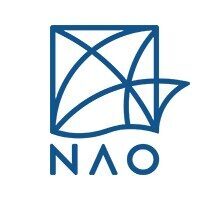The Rota 2024 archaeological field season has finished
Beginnings of September 2024, and our archaeological season on Rota, CNMI, came to an end. María Cruz Berrocal, María Martín Seijo, Álvaro Moreno Jiménez and Celine Kerfant have been the 2024 team members in the field. We have developed archaeological survey in 18 areas of the island, almost all of them classified as areas covered by native limestone forest. Prehistoric archaeological materials, our main target this year, have been found in 16 of these units.


Our scientific goals for the 2024 season focused on determining:
- settlement patterns in prehistory: was there a preference for inland/coastal areas?
- the intensity of settlement inland
- how did people cultivate the land?
- how does the archaeological record relate to current native forest?
With permission from the Historic Preservation Office, Rota and Saipan, some of the materials we have collected will be kept in Europe for study. All materials, also those acquired in the 2022 field season, will be eventually returned to Rota. During these months, we have also carried out the flotation of soil samples from the excavation carried out in 2022 in Taipingot, and the sorting of the heavy fraction.

Sorting is a especially burdensome task in the case of Taipingot: a large amount of minerals, small fragments of shells, fish spines and scales, and bones of small mammals, reptiles and birds, among other interesting things, are still trapped in the remaining sediment.

Recovering the 100% of them is tedious, but it provides us with data for a better understand the geomorphology of the site, postdepositional aspects, as well as information on the fauna consumed or living around people.

Botanical aspects are very important to our work, both current plant formations and uses, and archaeobotanical studies. Sampling has taken place in 2022 and 2024, with permission from the Department of Land and Natural Resources, Division of Fish and Wildlife (CNMI), and decided support from James Manglona, of the Department of Land and Natural Resources, Forestry Section, Rota.
Finally, we have continued the sampling of human bones in the store room of Historic Preservation Rota. This task was initiated in 2022: in collaboration with Kathrin Nägele, from the Max Planck Institution in Leipzig, we started the study and analysis of individuals recovered in previous excavations carried out by CRM projects in the last decades.
María Cruz Berrocal wishes to thank National Geographic Society for the funding generously provided for this research (grant number NGS-99765R-23).
James Bamba was hired by this project for 3 weeks.
Historic Preservation Office Saipan and Rota support this work: staff members John Palacios and Mertie Kan in Saipan provide us with necessary permissions, while Eloy Ayuyu, Vincent Mesngon, and Antonelli Rosario kindly and patiently reply to all our inquiries and always find the time to guide us to some difficult areas. Also the Mayor’s Office in Rota, governed by Mrs Aubry Hocog and managed by her team, is an important stakeholder in this research.
We thank James Manglona his guidance and friendly support under all circumstances, and Jerry Lee R. Narcis (Department of Land and Natural Resources, Forestry section) his kind help in the field.
Julita Calvo (DCCA, Rota) and the Ladies of the Mayor’s Office (commanded by Becky) have been welcoming and supportive of our research.
Alicia Waters and Henry Fandel (Department of Land and Natural Resources) have provided support in different aspects of the field research, as well as Alvin King (Commonwealth Utilities Corporation) and two staff members, who kindly guided us to Water Cave.
Our friends Nacrina and Renz Barcinas have constantly taken good care of us during these two months. We cannot thank them enough.
MCB’s friends and web wizards Roberto García de la Calle and Jesús Ropero Amor make this web possible.

